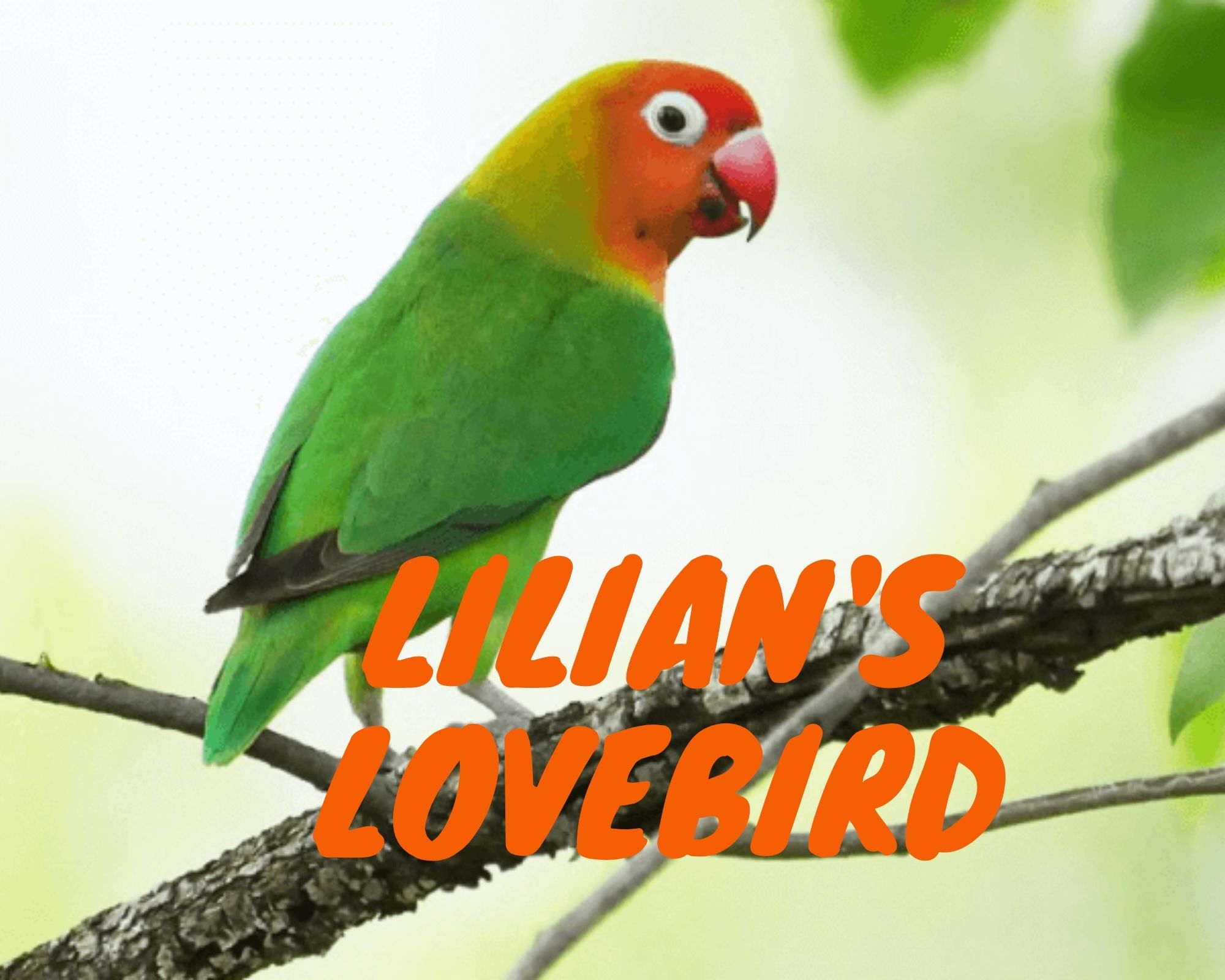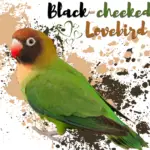
Lilian’s Lovebird 14 cm; 28–37 g. Similar to A. fischeri without blue upper tail-coverts, and with reddish-pink extending from the forehead, around the eye to chin and throat, orange-green on rest of crown. Immature has blackish ear-coverts.
Systematics History
Sometimes regarded as conspecific with A. nigrigenis, and also on occasion with A. fischeri and A. personatus; perhaps best considered to form a species-group with all three. Monotypic.

Subspecies
Monotypic.
Distribution
Isolated populations in S Tanzania, NW Mozambique and Malawi (S end of L Malombe), and SE Zambia along middle R Zambezi to N Zimbabwe, where patchy; in NE Zambia possibly introduced. Records of escaped individuals in S Namibia.
Habitat
Strong association with mopane (Colophospermum mopane) woodland in S of range, but also occurs in belts of Acacia on alluvium, riparian forest, and at fig trees in N; presence in S Tanzania probably linked to areas of Acacia woodland. Avoids miombo (Brachystegia) woodland in Zambia.
Movement
Apparently sedentary.

Lilian’s Lovebird Food
Grass seeds including Hyparrhenia, millet, and wild rice (Oryza perennis) and various others in low vlei areas; flowers and/or seeds or fruit of Acacia albida, Erythrophleum africanum, Vitex duamiana and wild mango (Cordyla africana).
Lilian’s Lovebird ? Nyasa Lovebird ? the smallest parrot on mainland Africa
SOURCE: Amazing Planet!
Sounds and Vocal Behavior
The commonest vocalization of Lilian’s Lovebird is a screechy “krreek” or a disyllabic “chi-reek!”. When perched, utters a wide variety of chirruping and screechy notes. Large flocks maintain continuous twittering. No clear differences between A. fischeri, A.personatus, and A. nigrigenis.
Breeding
Jan–Mar and Jun–Jul in Zambia; possibly lays Jan and Feb in Malawi; 4 young, 2 well-grown and 2 much younger, in Apr, Zimbabwe.
Lilian’s Lovebird Nest is a roofed structure in crevices in mopane trees and perhaps old nests of White-billed Buffalo-weavers (Bubalornis albirostris). In captivity: 3–8 eggs; incubation c. 22 days; nestling period 44 days.
Lilian’s lovebird at play
SOURCE: MrRoverpilot
Conservation Status
Not globally threatened. CITES II. Currently considered Near Threatened. Common in most of the range. Common in large flocks at the only site, Malawi; often in large flocks, Zambia. Very common locally, and overall population not large and susceptible to over trapping, Zimbabwe. Locally common, Mozambique.




















